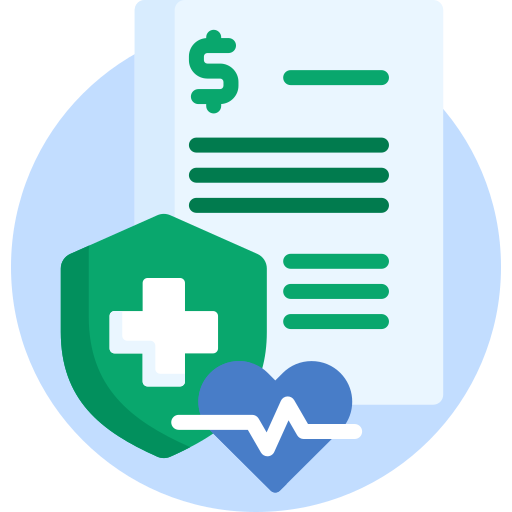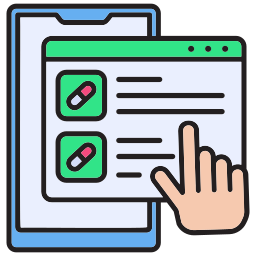Healthcare providers are moving beyond paper records and legacy systems, and ambulatory EHRs are leading the way in outpatient care. Traditional hospital-based EHRs manage inpatient records, admissions, and complex workflows, whereas ambulatory EHRs are built specifically for outpatient clinics, physician offices, and urgent care centers.
Designed for fast-paced, high-volume outpatient settings, ambulatory EHR streamlines patient visits, clinical documentation, billing, and follow-ups—all while ensuring seamless data exchange and compliance. With the rise of cloud-based EHR software, providers can now access patient data in real time, automate administrative tasks, and improve care coordination without being tied to a single location.
Let’s explore how ambulatory EHR transforms outpatient care and what providers need to know when choosing the right system.
What is Ambulatory EHR?
Ambulatory EHR is a specialized system designed for outpatient settings, including small practices, urgent care centers, and specialty clinics. The hospital-based EHRs manage inpatient records, surgical workflows, and complex billing, while ambulatory EHRs focus on outpatient care, streamlining patient visits, documentation, and treatment plans without the added complexity of hospital management systems.
A well-designed ambulatory EHR enhances clinical efficiency, reduces paperwork, and improves care coordination, allowing providers to document patient interactions in real time, access medical histories instantly, and manage prescriptions electronically. These systems support appointment scheduling, charting, lab orders, and secure messaging, making them ideal for fast-paced outpatient settings where efficiency is key.
For small clinics and independent practices, cloud-based EHR software is often the best choice, offering scalability, remote access, and automatic updates without the need for on-premise servers. This makes ambulatory EHRs a cost-effective, flexible solution for healthcare providers looking to enhance patient care while keeping operations smooth, cost-effective, and compliant.
Key Features & Functionality of Ambulatory EHR
The right EHR system can make all the difference for outpatient care providers. Unlike hospital-based EHRs, ambulatory EHRs are specifically designed for private practices, clinics, and community health centers, streamlining patient management, clinical workflows, and revenue cycle processes.
With the growing adoption of cloud-based EHR software, healthcare providers now have access to scalable, secure, and interoperable systems that enhance patient care and operational efficiency.
Let’s dive into the key features and functionalities of ambulatory EHRs to help you understand what makes them essential for modern outpatient care.
1️⃣ Patient Management
Ambulatory EHR systems streamline patient registration, scheduling, and follow-ups, ensuring a seamless outpatient workflow. With automated reminders, real-time eligibility checks, and integrated patient portals, healthcare providers can reduce no-shows, enhance engagement, and improve patient experience.
2️⃣ Clinical Documentation
Accurate and efficient clinical documentation is essential for outpatient care. Ambulatory EHRs offer customizable templates, voice recognition, and AI-driven documentation tools to reduce manual data entry and ensure comprehensive, structured patient records for better clinical decision-making.
3️⃣ Billing and Revenue Cycle Management (RCM)
It might be difficult to manage billing, claims, and reimbursements. Cloud-based EHR software streamlines revenue cycle management operations by automating coding, claims scrubbing, and real-time insurance verification, resulting in faster payouts and fewer claim denials.
4️⃣ Reporting and Analytics
Data-driven decision-making is crucial in modern healthcare. Ambulatory EHRs provide customizable dashboards, financial reports, and patient outcome analytics, helping providers track performance, optimize workflows, and improve care quality with actionable insights.
5️⃣ Specialty-specific Features
Every specialty has unique requirements. Advanced ambulatory EHRs come with custom templates, specialty-specific workflows, and tailored clinical decision support to meet the needs of cardiology, orthopedics, dermatology, and other outpatient specialties.
6️⃣ Interoperability
Seamless data exchange between systems is critical for coordinated care. A robust ambulatory EHR integrates with labs, imaging centers, hospitals, and pharmacies using FHIR and HL7 standards, ensuring real-time access to patient records across different healthcare settings.
7️⃣ Mobile Access
Modern healthcare providers need on-the-go access to patient records. Mobile-friendly ambulatory EHR solutions allow clinicians to review charts, prescribe medications, and document visits from smartphones or tablets, improving efficiency and accessibility.
8️⃣ Security and Compliance
Protecting patient data is non-negotiable. Ambulatory EHRs incorporate HIPAA-compliant encryption, role-based access controls, and multi-factor authentication to protect sensitive information while ensuring regulatory compliance.
9️⃣ User-Friendly Interface
A well-designed EHR should enhance, not hinder, clinical workflows. Intuitive dashboards, easy navigation, and minimal clicks per task help providers focus on patient care rather than technology.
🔟 Cloud-based or On-premise
Providers can choose between cloud-based EHR software for scalability, automatic updates, and lower maintenance costs or on-premise solutions for greater control over data and security. The right choice depends on practice size, infrastructure, and long-term needs.
How to Choose the Best Ambulatory EHR for Your Practice?
Selecting the right ambulatory EHR is a critical decision that impacts workflow efficiency, patient care, and regulatory compliance. With so many cloud-based EHR software options available, it’s essential to take a structured approach. Here’s how to make the right choice:
✅ Assess Your Needs
Every practice has unique requirements. Start by identifying must-have features, such as e-prescribing, telehealth integration, billing, and patient portals. Consider specialty-specific needs and ensure the EHR can streamline documentation, improve interoperability, and enhance patient engagement.
✅ Research and Compare EHR Systems
Not all ambulatory EHRs are created equal. Research vendor reputation, system usability, and compliance standards. A strong cloud-based EHR software should offer scalability, seamless integrations, and data security while aligning with ONC and HIPAA guidelines.
✅ Request Demos and Trials
Seeing the EHR in action is crucial. Request live demos or free trials to test usability, workflow adaptability, and overall user experience. Pay attention to navigation, charting efficiency, reporting capabilities, and mobile accessibility to ensure a smooth transition.
✅ Evaluate and Select
Once you’ve tested multiple systems, compare their pricing, implementation timelines, support availability, and long-term scalability. Look for an ambulatory EHR that can grow with your practice, minimize administrative burden, and improve care coordination.
✅ Implementation and Training
Even the best cloud-based EHR software requires proper onboarding. Work with the vendor to create a structured implementation plan, including data migration, staff training, and workflow customization. A well-executed transition ensures minimal disruptions and faster adoption.
✅ Ongoing Support and Optimization
Choosing an EHR is just the beginning. Regular system updates, user training, and workflow optimizations keep your practice running smoothly. Opt for a vendor with 24/7 support, continuous improvements, and compliance updates to stay ahead in the evolving healthcare landscape.
Comparison of Leading Ambulatory EHR Vendors
Selecting the best ambulatory EHR is a decision that impacts practice efficiency, patient care, and compliance. With multiple vendors offering cloud-based EHR software, it’s essential to compare features, interoperability, user experience, and scalability to find the right fit.
Below is a detailed comparison of Epic, Cerner by Oracle, NextGen Health, and Athenahealth, helping healthcare providers make an informed choice.

Challenges in Implementing Ambulatory EHR & Solutions
Implementing an ambulatory EHR system offers massive benefits for outpatient practices, but the process isn’t always smooth. From cost concerns to interoperability issues, providers face several roadblocks along the way. Below are the biggest challenges and practical solutions to ensure a seamless transition to cloud-based EHR software.
Cost of Implementation and Maintenance
❌ Challenge:
Ambulatory EHR systems require significant upfront investment, including software, hardware, training, and ongoing maintenance. For small to midsized practices, this can be a major financial hurdle.
✅ Solution:
Opting for cloud-based EHR software eliminates the need for costly on-site servers and IT infrastructure, reducing initial investment and long-term maintenance expenses. Many vendors offer subscription-based pricing, making EHR adoption more affordable and scalable.
Resistance to Change and User Adoption
❌ Challenge:
Resistance to change and user adoption is a significant hurdle in EHR implementation. Providers and staff may be reluctant to learn new systems, fear technology, or worry about decreased efficiency and increased complexity. Skepticism about the benefits of EHRs and change fatigue from constant updates can also contribute to resistance. This reluctance can hinder successful implementation, leading to decreased productivity, increased errors, and frustration among staff, ultimately impacting patient care and practice efficiency.
✅ Solution:
Investing in user-friendly ambulatory EHR platforms with intuitive interfaces can ease the transition. Providing hands-on training, live support, and gradual implementation helps increase staff confidence and adoption rates.
Data Migration and Interoperability
❌ Challenge:
Healthcare IT faces challenges in data migration and interoperability, particularly when transferring records from old systems to new EHRs. Poor interoperability can lead to data loss, workflow disruptions, and medical errors. Solutions include robust migration plans, standardization, validation checks, and HL7 and FHIR standards.
✅ Solution:
Choosing an ambulatory EHR with FHIR-compliant APIs ensures seamless data exchange between systems. Working with EHR migration specialists reduces the risks of data loss or inconsistencies during the transition.
Workflow Disruptions and Productivity Loss
❌ Challenge:
A new EHR can disrupt clinical workflows, making it harder for providers to document patient encounters efficiently. Temporary productivity drops can impact appointment scheduling, billing, and care delivery.
✅ Solution:
A phased implementation approach, starting with essential features, minimizes disruptions. Choosing a cloud-based EHR software that supports automation, voice recognition, and mobile access speeds up workflows and improves efficiency.
Security and Privacy Concerns
❌ Challenge:
Handling electronic health records increases the risk of data breaches, unauthorized access, and compliance violations. Without proper security measures, patient data can be vulnerable to cyberattacks.
✅ Solution:
Implementing HIPAA-compliant, cloud-based EHR software with multi-layer encryption, access controls, and real-time monitoring ensures data security. Regular security audits and staff training further reduce risks.
Technical Challenges
❌ Challenge:
Providers may face downtime, slow system performance, or IT integration issues after switching to an ambulatory EHR. A lack of dedicated tech support can make troubleshooting difficult.
✅ Solution:
Selecting an EHR vendor with 24/7 technical support and regular system updates ensures minimal downtime. A cloud-based EHR eliminates on-premise maintenance issues, keeping systems running smoothly.
Lack of Customization
❌ Challenge:
Not all ambulatory EHRs offer customization options, forcing providers to adjust their workflows around the software rather than the other way around.
✅ Solution:
Choosing an ambulatory EHR with flexible templates, workflow automation, and role-based configurations allows providers to tailor the system to their specific practice needs.
Ambulatory EHR Market Trends & Growth
The ambulatory EHR market is evolving rapidly, driven by technological advancements, regulatory requirements, and the need for more efficient outpatient care. The ambulatory EHR market was valued at $6.5 billion in 2024 and is expected to reach $1.1 billion by 2032, growing at a CAGR of 7.0% between 2025 and 2032.
As healthcare providers shift toward value-based care and digital transformation, cloud-based EHR software and AI-driven solutions are becoming essential.
Here’s a look at key trends shaping the ambulatory EHR landscape.
🤖 Artificial Intelligence (AI) Integration
AI is revolutionizing ambulatory EHRs by automating charting, coding, and predictive analytics. AI-driven EHR systems assist physicians in diagnosing conditions faster, flagging anomalies, and optimizing treatment plans. With AI-powered medical coding automation, billing accuracy improves, reducing claim denials and revenue loss.
Related Read: The Impact of AI on Electronic Health Records
🩺 Patient Engagement Tools
Modern ambulatory EHR systems now include patient portals, telehealth integrations, and mobile health tracking. These tools allow patients to access their records, schedule appointments, and communicate with providers, leading to higher patient satisfaction and improved treatment adherence. Enhanced engagement reduces missed follow-ups and boosts preventive care efforts.
❤️🩹 Value-based Care Support
Healthcare is shifting from fee-for-service to value-based care models, emphasizing quality over quantity. Advanced ambulatory EHRs support outcome-driven care by tracking population health trends, risk assessments, and quality metrics. These capabilities help providers meet reimbursement requirements and enhance patient outcomes.
Related Read: Value-based Care vs Fee-for-Service
🛡️ Cybersecurity and Data Privacy
As cyber threats in healthcare increase, EHR security is a top priority. Cloud-based EHR software now includes multi-factor authentication, end-to-end encryption, and real-time threat detection to protect sensitive patient information. Compliance with HIPAA and GDPR ensures that patient data remains secure and private.
How does HealthConnect CoPilot work?
A seamless ambulatory EHR system needs more than just software—it requires smooth integration, optimized workflows, and continuous support. HealthConnect CoPilot simplifies cloud-based EHR software implementation, ensuring that providers get the most out of their system while staying compliant and efficient. Here’s how it works:
1️⃣ Assess – A thorough evaluation of your current EHR system helps identify integration needs, data migration challenges, and workflow improvements.
2️⃣ Integrate – Using FHIR-compliant APIs, HealthConnect CoPilot enables seamless data exchange across different healthcare systems, ensuring real-time access to patient records.
3️⃣ Optimize – AI-driven analytics improve clinical workflows, automate routine tasks, and enhance decision-making, allowing providers to focus more on patient care.
4️⃣ Support – Ongoing assistance, compliance monitoring, and security updates ensure that your ambulatory EHR remains reliable, scalable, and up to date.
HealthConnect CoPilot transforms ambulatory EHR implementation, making it smarter, faster, and more efficient for healthcare providers.
Conclusion
Outpatient care requires speed, accuracy, and seamless patient management, and a well-implemented ambulatory EHR ensures just that. By digitizing records, streamlining workflows, and enabling real-time access to patient data, providers can deliver more efficient, personalized care while reducing administrative burdens. The traditional hospital-based systems, ambulatory EHRs, are designed for high-volume, fast-paced environments, ensuring that clinicians spend less time on paperwork and more time with patients.
With the rise of cloud-based EHR software, outpatient facilities now have access to scalable, secure, and cost-effective solutions that support interoperability, telehealth, and mobile access. Implementing an ambulatory EHR optimizes efficiency, enhances patient engagement, and ensures compliance with industry regulations. For healthcare providers looking to modernize their practice and improve care coordination, a robust ambulatory EHR isn’t just an option—it’s a necessity.
- What is an ambulatory EHR system?
An ambulatory EHR is an electronic health record system designed for outpatient care, helping providers manage patient records, prescriptions, billing, and documentation efficiently.
- What is the top ambulatory EMR?
Popular ambulatory EHR/EMR systems include Epic, Athenahealth, eClinicalWorks, Cerner Ambulatory, and NextGen Healthcare, each offering cloud-based solutions for outpatient facilities.
- What is the use of ambulatory?
Ambulatory refers to outpatient care, where patients receive medical treatment without hospital admission, requiring efficient scheduling, documentation, and follow-ups—all managed through an ambulatory EHR.
- How does a cloud-based EHR software benefit ambulatory care?
Cloud-based EHR software enables secure access to patient data from anywhere, supports telehealth and interoperability, and reduces IT costs and infrastructure needs for outpatient providers.
- How is an ambulatory EHR different from a hospital EHR?
An ambulatory EHR is built for outpatient practices, focusing on faster documentation, billing, and care coordination, while hospital EHRs handle inpatient workflows, bed management, and multi-department operations.

Pravin Uttarwar, CTO of Mindbowser
As the CTO of Mindbowser, a healthcare-focused software development company, I am dedicated to delivering cutting-edge digital solutions that transform patient care and operational efficiency. With over 16 years of experience and as an MIT alumnus, I specialize in healthcare interoperability, FHIR-compliant systems, and AI-powered platforms, crafting scalable products and architectures tailored to the unique needs of healthcare providers and enterprises.
I have spearheaded the development of over 100 products and platforms, guiding them from concept to full-fledged solutions. My expertise extends to scaling remote tech teams, driving EHR integrations, and building secure, cloud-native healthcare solutions. By shaping technology visions and roadmaps, I help clients achieve long-term growth and success in the rapidly evolving healthcare landscape.
HealthConnect CoPilot enabled us to access real-time patient health data through integration with Apple HealthKit, enhancing care delivery while maintaining HIPAA compliance. This led to personalized care and improved outcomes for patients.

AI-enhanced Obstetrics Clinical Decision Support Platform
HealthConnect CoPilot's integration with Epic's Hyperspace has transformed our workflow. Automated post-delivery examinations and HL7 protocol use ensure accurate updates to Epic. Their expertise empowers informed decision-making in childbirth

Top Provider for Customized Healthcare Solutions
HealthConnect CoPilot's helped us to integrate with leading tracking devices such as Apple Watches and Fitbit. This integration enables effortless syncing of health data, providing users with real-time insights displayed directly on our flagship products: smart mirrors and digital calendars.

A Provider of Customizable Display Solutions
Post a comment Cancel reply
Related Posts
EHR Integration for Solo Practices: A Complete Step-by-Step Guide
Still running your solo practice on sticky notes and spreadsheets? It’s time for an upgrade.…
Epic Wisdom Explained: Features, Benefits, and Why It’s the Future of Dental EHR
Dental care has traditionally existed in its bubble, separate from the hospital EHRs, invisible to…
FHIR Versions: The Past, The Present & The Future
The Fast Healthcare Interoperability Resources (FHIR) standard has revolutionized healthcare data exchange, enabling seamless interoperability…
What Are CDS Hooks? A Simple Guide for Healthcare Providers
CDS Hooks are changing how clinical decision support (CDS) works inside EHRs, bringing real-time, context-aware…
The Challenges and Benefits of EHR Integration for Health Tech Companies
As digital health companies continue to innovate and develop cutting-edge healthcare solutions, one of the…
Streamlining Behavioral Healthcare with Epic EHR Integration
Behavioral healthcare providers are facing an increasing demand for streamlined systems that can integrate multiple…









